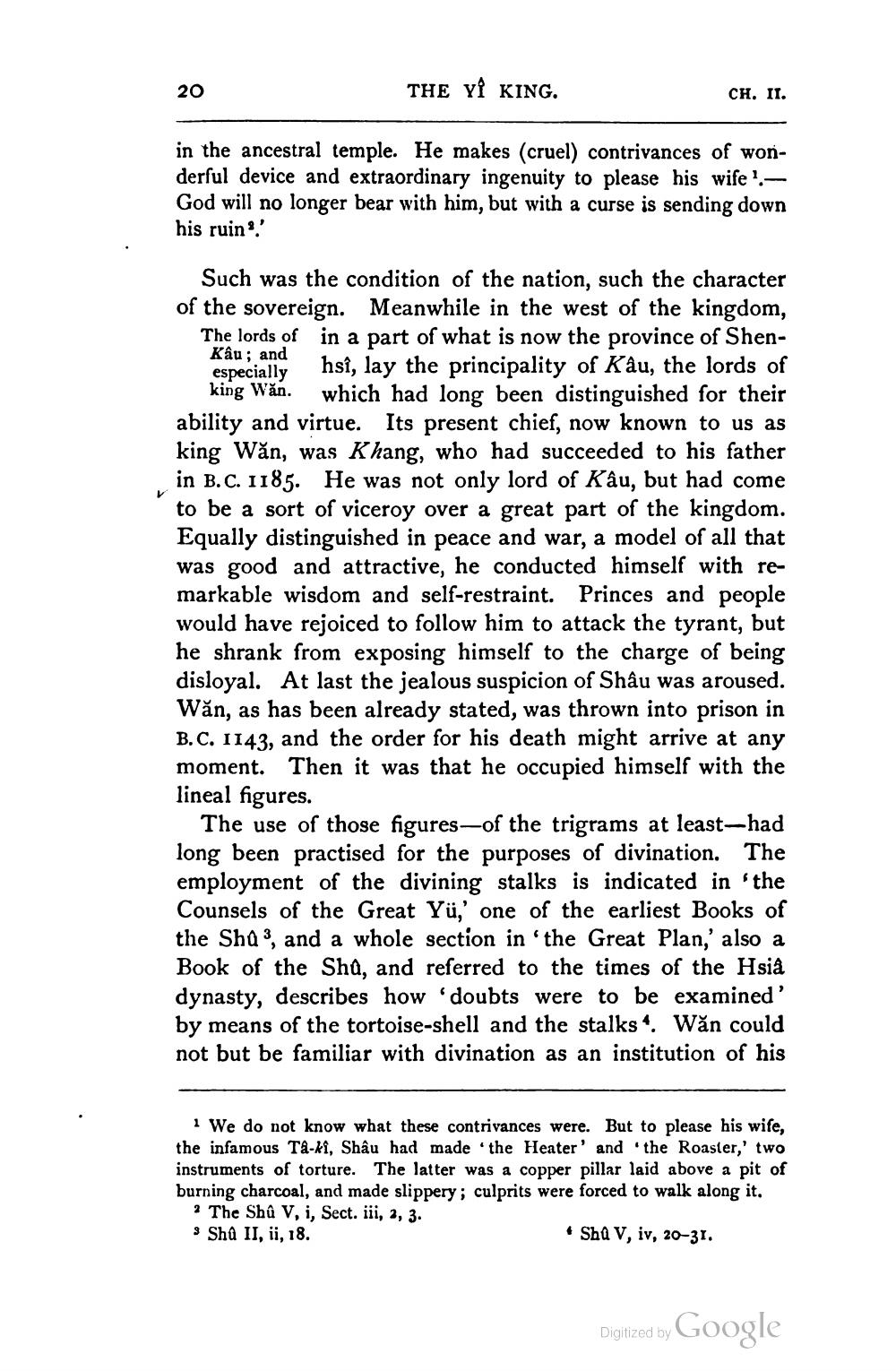________________
20
THE YI KING.
CH. II.
in the ancestral temple. He makes (cruel) contrivances of wonderful device and extraordinary ingenuity to please his wife .God will no longer bear with him, but with a curse is sending down his ruin'
Such was the condition of the nation, such the character of the sovereign. Meanwhile in the west of the kingdom,
The lords of in a part of what is now the province of ShenKâu; and
ecially hsî, lay the principality of Kâu, the lords of king Wăn. which had long been distinguished for their ability and virtue. Its present chief, now known to us as king Wăn, was Khang, who had succeeded to his father in B.C. 1185. He was not only lord of Kâu, but had come to be a sort of viceroy over a great part of the kingdom. Equally distinguished in peace and war, a model of all that was good and attractive, he conducted himself with remarkable wisdom and self-restraint. Princes and people would have rejoiced to follow him to attack the tyrant, but he shrank from exposing himself to the charge of being disloyal. At last the jealous suspicion of Shâu was aroused. Wăn, as has been already stated, was thrown into prison in B.C. 1143, and the order for his death might arrive at any moment. Then it was that he occupied himself with the lineal figures.
The use of those figures—of the trigrams at least-had long been practised for the purposes of divination. The employment of the divining stalks is indicated in the Counsels of the Great Yü,' one of the earliest Books of the Sha", and a whole section in the Great Plan,' also a Book of the Sha, and referred to the times of the Hsià dynasty, describes how 'doubts were to be examined' by means of the tortoise-shell and the stalks. Wăn could not but be familiar with divination as an institution of his
1 We do not know what these contrivances were. But to please his wife, the infamous Ta-ki, Shâu had made the Heater' and 'the Roaster,' two instruments of torture. The latter was a copper pillar laid above a pit of burning charcoal, and made slippery; culprits were forced to walk along it.
· The Shû V, i, Sect. iii, 2, 3. * Sha II, ü, 18.
• Sha v, iv, 20–31.
Digitized by Google




